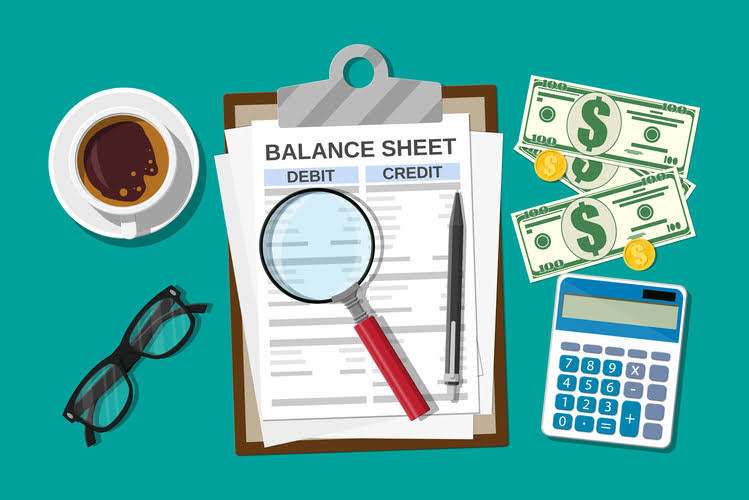Accounting 101: How to Master Your Inventory Accounting

Overall, an efficient inventory management process is essential for businesses to keep track of their stock and ensure that customer orders are fulfilled promptly and accurately. Inventory accounting is the practice of keeping track of the value of inventory items through their respective production stages. The main advantage of this accounting method is that it provides a more accurate representation of the company’s financial health.

Accounting Classification: Is Inventory a current asset or expense?

These processes help businesses keep track of their inventory levels and ensure that they have enough stock on hand to meet customer demand. In today’s rapidly changing business environment, inventory control is essential for ensuring businesses can continue operating smoothly and efficiently. Company C, a wholesaler dealing with fluctuating market prices, adopted the weighted average method for inventory accounting.
Understanding inventory costing
LIFO can lead to reduced taxes during inflationary periods, as it typically increases the cost of goods sold and lowers net https://www.bookstime.com/articles/cash-flow-statement income. However, it’s not permitted under International Financial Reporting Standards (IFRS), limiting its use to countries that allow it, such as the United States. When you track inventory accurately, you’ll spot patterns in sales trends that can be helpful for creating more effective marketing campaigns. Inventory accounting lets you monitor shrinkage effectively so you can account for it accurately in your financial reporting.
Inventory Accounting
- When they put these materials into produce and start cutting the bars and shaping the metal, the raw materials become work in process inventories.
- Finished goods are products that have completed the production process and are ready for sale.
- Inventory accounting also helps businesses find opportunities to reduce costs, such as by sourcing from new suppliers, using inventory control systems, and automating business processes.
- This cost not only includes the purchase price of the inventory but also any additional costs necessary to make the items ready for sale, such as freight or handling fees.
Inventory accounting also helps businesses find opportunities to reduce costs, such as by sourcing from new suppliers, using inventory control systems, and automating business processes. The Weighted Average method in inventory accounting compromises the First-In, First-Out (FIFO) and Last-In, First-Out (LIFO) methods. Under the Weighted Average approach, the cost of each item in inventory is averaged over the total number of items in inventory, regardless of when they were purchased or manufactured. Inventory is the lifeblood of a business, crucial not just in operations but also in financial accounting.
- In contrast, the perpetual inventory system requires details of each inventory movement to be recorded.
- Inventory is a current asset because it converts to revenue within a short time frame, typically within a year.
- Inventory accounting helps you to correctly track the cost of any inventory sold and accurately value any unsold inventory that remains at the end of each accounting period.
- Although it may seem like a tedious task, performing a physical inventory is essential to ensure the accuracy of the university’s balance sheet.
- Because of the fast fashion nature of turnover, Zara, like other fashion retailers is under pressure to sell inventory rapidly.
- Inventory management accounting ensures inventory value is recorded correctly on the company’s balance sheet.
How to Account for Stock Discrepancies
The following FAQs and best practices provide an excellent overview of what businesses need to know about inventory accounting and supply chain management. Working closely with accounting and inventory experts can often overcome these challenges. By valuing inventory properly, companies can ensure that their financial statements are accurate and that they are not overpaying taxes on their inventory. An inventory report is simply a record of a business’s stock at any given moment. By tracking inventory levels closely and using reports to guide decision-making, Online Accounting businesses can avoid the costly mistakes of taking too much or too little stock. They represent the raw materials, work-in-progress and finished goods a company has to support its operations.

- Generally, the units are physically removed from inventory by selling the oldest units first.
- LIFO, on the other hand, assumes the most recent items purchased are the first ones to be sold.
- While vendor-managed inventory systems can benefit suppliers and customers, they require trust and coordination between parties.
- By taking a strategic approach to inventory management, businesses can increase their profits and keep their customers happy.
- Basically, a count is performed periodically throughout the year to see what was sold and what was left.
It’s good to consult an accountant or financial professional to determine the most suitable method for a specific business. While both ASC 330 and IFRS require inventory to be valued at the lower of cost or market value, the definition of market value can differ slightly. Under ASC 330, market value refers to the replacement cost of the inventory, but with limits based on net realizable value and normal profit margins. IFRS, on the other hand, places greater emphasis on net realizable value alone.

Methods to value the inventory include last-in, first-out, first-in, first-out, and the weighted average method. For instance, a company runs the risk of market share erosion and losing profit from potential sales. Cooperation among employees is a common problem of the inventory management team. It will be harder for a business to spot inventory bookkeeping issues if the teams involved in inventory are not exchanging vital information.